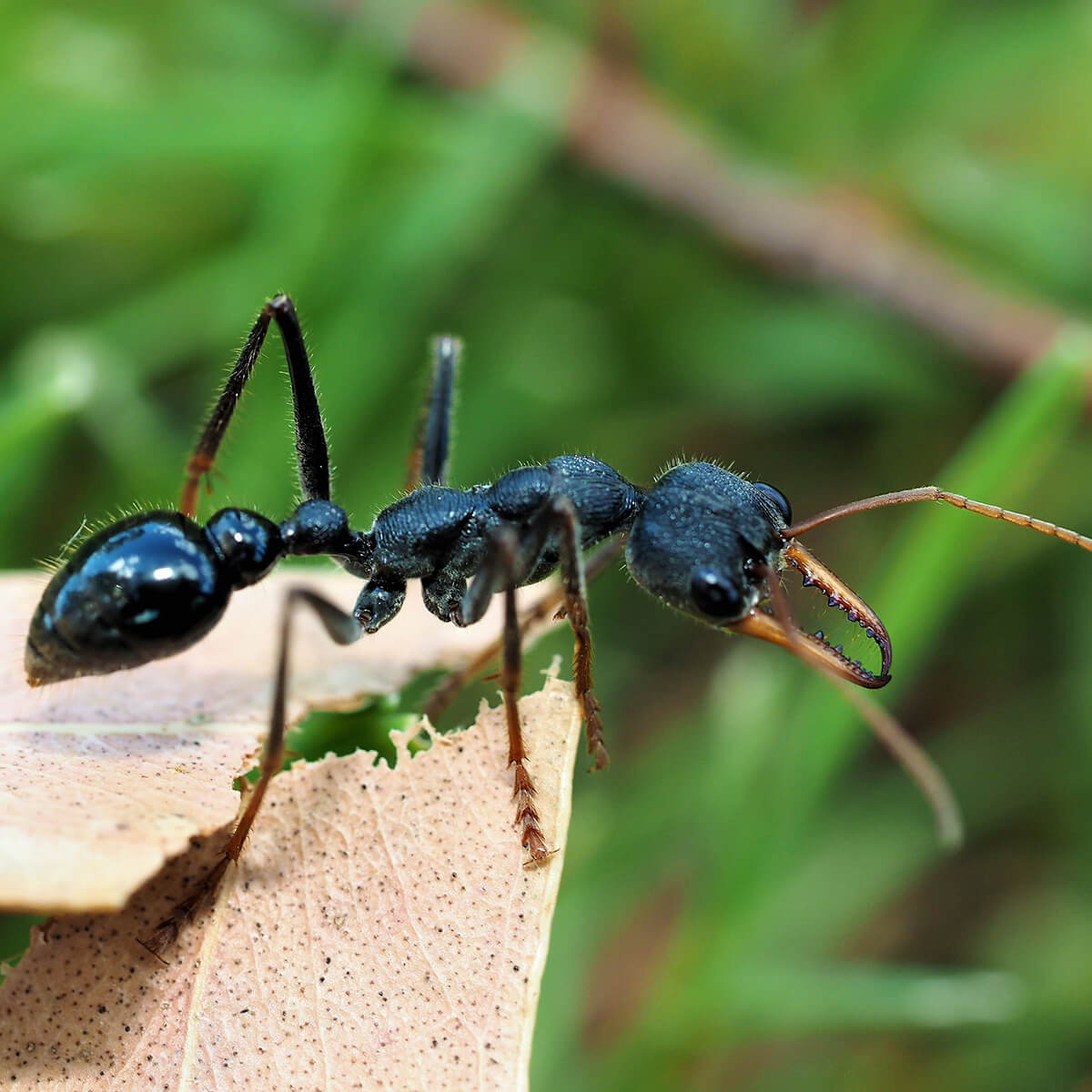Jack jumper ant
This species also goes by the name of jumper ant or hopper ant. These names are not coincidental, as the ants are known to jump pretty far when in danger. They are woodland and forest creatures, but they may settle in your garden without hesitation, too.
Jack jumper ants characteristics

- Scientific name: Myrmecia pilosula
- Colour: Back torso with light orange or yellow legs, mandibles and antennae.
- Legs: 6
- Size: Usually 12-14 mm with the queens being the bigger ones.
- Antennae: 2
- Bites or stings: Jack jumper ants sting and they inject venom while they do it. Not a pleasant experience for sure.
- Danger: This is an aggressive ant species that will attack you if threatened. If an Australian jack jumper ant stings you, it could lead to a severe allergic reaction.
- Region: Southern and Eastern Australia, Tasmania
Jack jumper ants’ life cycle
- These ant species can have up to four queens in a colony. Despite that fact, the jack jumper worker ants can reproduce on their own even without a queen around.
- A queen can mate with up to nine males during a reproductive period. In most cases, though, the queen limits her choice to just one or two candidates.
- The workers in a jack jumper colony have a life expectancy of around a year. The queens, on the other hand, can surpass them significantly, reaching 10 years.
Jack jumper ants’ habits
- They need lots of small stones and gravel to build their nest. Therefore, bushlands, woodlands and forests are the most convenient places.
- These types of ants like to go out during the day and hunt for food, preferably in warm weather.
- Jack jumpers enjoy a diversified diet. Honeydew is one of the things on the menu. These ants are also excellent predators and they like feasting on spiders, other ants, wasps and other insects.
Facts about jack jumpers
- These ants have quite strong mandibles, which they use to grasp onto their victim before they sting and inject venom.
- The symptoms of a jack jumper ant’s sting may vary. They go from mild, including irritation of the affected place, to more serious like swelling, heavy breathing and even loss of consciousness. If you happen to feel your symptoms getting worse, then look for medical attention immediately.
- Noticing a jack jumper ants’ nest is not easy. They are covered by gravel and sand, with the entrance hole remaining visible from the outside. The nest remains underground.
If you have suspicions there is a jack jumpers' nest somewhere on your property, we can send a team of professional pest controllers to investigate for you.